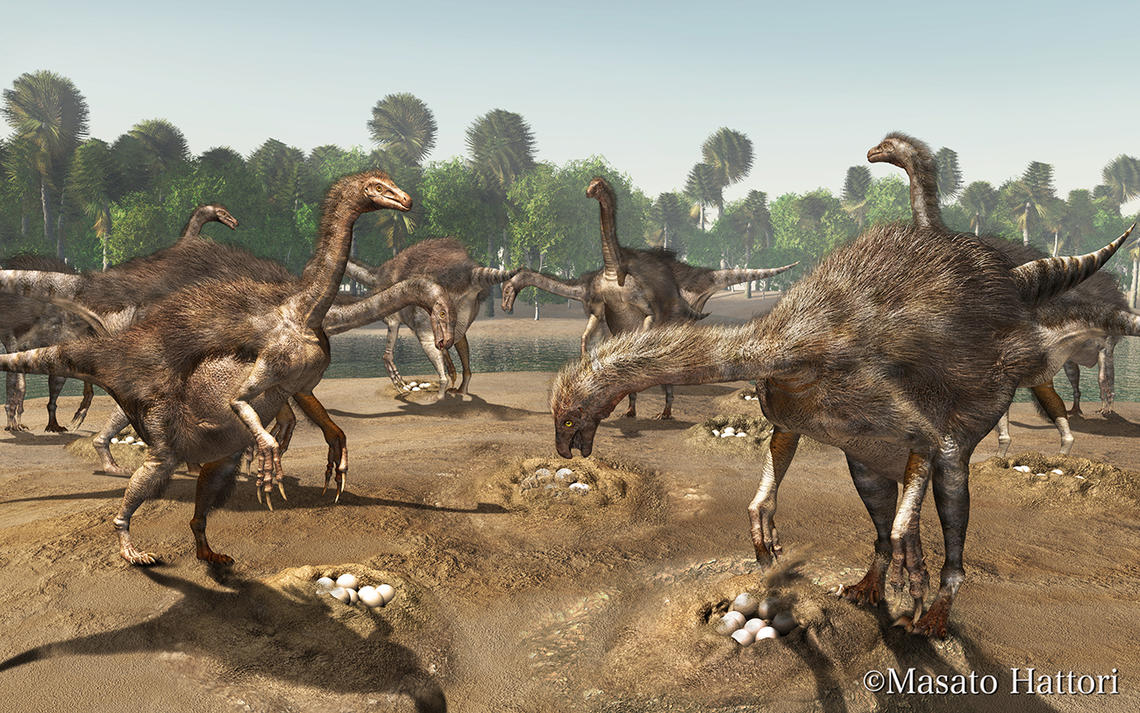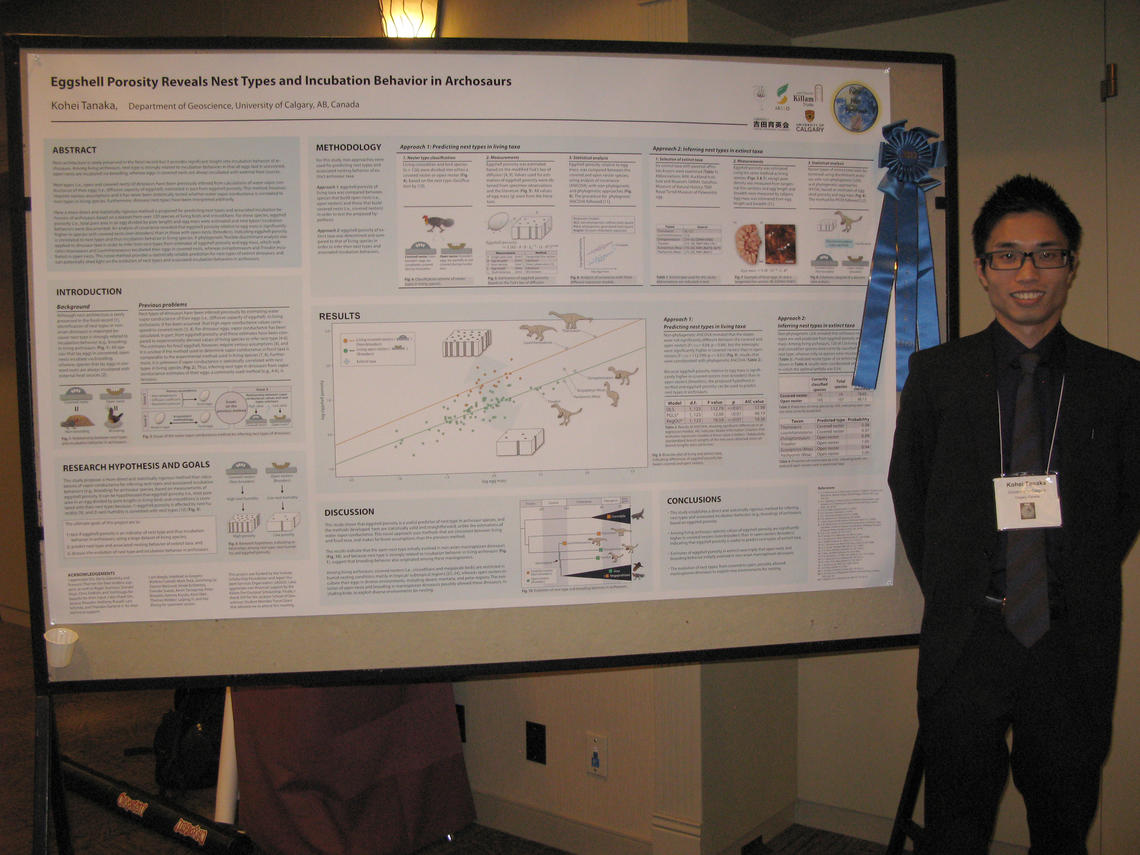
Research shows therizinosaurs nested in colonies to protect against predators, much like birds.
Nov. 8, 2013

Research shows therizinosaurs nested in colonies to protect against predators, much like birds.
They were an enigmatic group of dinosaurs with big guts, short legs, long necks and beaks and they lived in the Gobi Desert in Mongolia and seemingly built their nests in colonies to keep them safe from predators.
Those details and others about the first dinosaur nesting colony found in Asia – which contained about 75 eggs in 18 different nests – are cited in a new study whose co-authors include the principal dinosaur researcher in the University of Calgary’s geoscience department, Darla Zelenitsky and a geoscience PhD student working in her lab, Kohei Tanaka.
Researchers performed a detailed analysis into the therizinosaurs eggs’ hatching success, revealing that the dinosaurs covered their eggs during incubation and they likely guarded their nests for protection from predators.
"These dinosaurs may have nested in colonies to protect their nests against predators, a strategy also used by the living descendants of dinosaurs: birds," says Tanaka.
“This is the largest dinosaur nesting site discovered belonging to those dinosaurs most closely related to birds,” says Zelenitsky, “It reveals that the behaviour of nesting in colonies was more common among the dinosaurian ancestor of birds than previously known."
The study was presented at the Society of Vertebrate Paleontology Annual Meeting in Los Angeles Oct. 29 – Nov. 3.

PhD student Kohei Tanaka was awarded the Colbert Student Poster Prize.
At the same conference, Tanaka was awarded the highly prestigious Colbert Student Poster Prize for an outstanding student poster presentation.
"It is a great honour to have my research acknowledged in this way by an international paleontological organization, “ he says.
The poster presented a study that examined the eggs of more than 100 species of living birds and crocodiles — animals that represent the dinosaurs’ closest living relatives. The study allowed inferences on the types of nests various dinosaurs built and suggested how dinosaur nesting behavior changed through their evolution.
"The analysis enabled me to develop new methods to infer the nesting style of various dinosaurs. This study reveals that small meat-eating dinosaurs incubated their eggs via brooding in open nests, which was later inherited by birds."
Tanaka has also received a highly competitive three-year Japan Student Services Organization scholarship from the Japanese government and an Honorary Killam Scholarship for his PhD program.